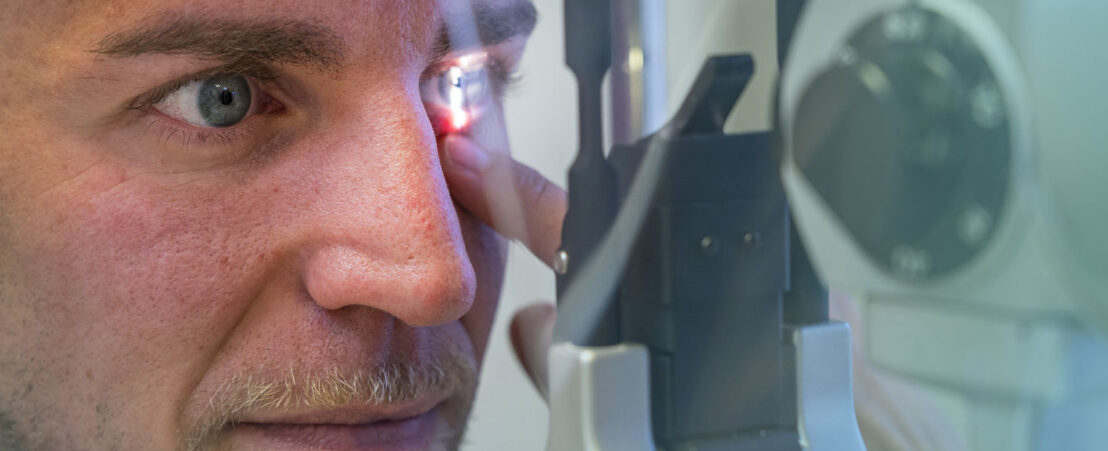
Cataract symptoms consist of a slow and progressive visual loss, which usually occurs over months or years and affects one or both eyes. People with cataracts may experience glare, especially with headlights at night, as well as decreased color perception. The particular symptoms depend on the location and density of the opacity, although the most characteristic sign is the opacification of the lens, which should normally be transparent (see the respective types below).
On a fundus examination, the retina often appears blurred, and on a retinoscopy, the fundus reflex looks attenuated in a dilated state. The patient may present a refractive change consisting of myopization. The cataract alone does not cause any afferent pupillary defect.
Nuclear: Yellowish or brown coloration of the central portion of the lens on biomicroscopy. Typically, visual impairment is more pronounced in far vision than in near vision.
Posterior subcapsular: The opacities are located near the posterior surface of the lens and often form a plaque. They are best appreciated by backlighting against the red background reflection. Glare and reading difficulty are common. It can be accompanied by eye inflammation, long-term steroid use, diabetes, trauma, or radiation. It is usually more common in young people.
Cortical: Radiated opacities in the periphery of the lens that expand to encompass the anterior and posterior portions. It is often asymptomatic, until the changes appear in the center.
The cause of the cataract must be determined as well as establishing whether or not the cataract is responsible for the patient’s vision loss and ruling out any other eye conditions. We will then be able to decide whether vision can be improved by surgically removing the clouded lens.
The patient’s medical history will be taken into account and a full eye exam will be carried out covering near and distance vision and pupil reaction. Other tests include ocular fundus (which looks at the back of the eye), a macular OCT (which maps out the surface of the retina) and ultrasound, amongst others.
Cataract surgery is the only effective option for treating cataract. It is fast and highly effective as well as having a very low complication rate. The surgery involves removing the clouded lens and replacing it with an artificial one. This new lens can be personalized to correct near, middle or distance vision depending on the patient’s individual needs and can mean independence from glasses in many cases. In some cases, cataract surgery may also be performed as part of the treatment for another eye condition (such as glaucoma or uveitis).
Cataract on its own does not require urgent treatment, unless it is related to another eye condition (such as glaucoma). Patients who do not require cataract surgery should have an anual eye exam (unless they notice a sudden deterioration in their vision).
Contact us or request an appointment with our medical team.